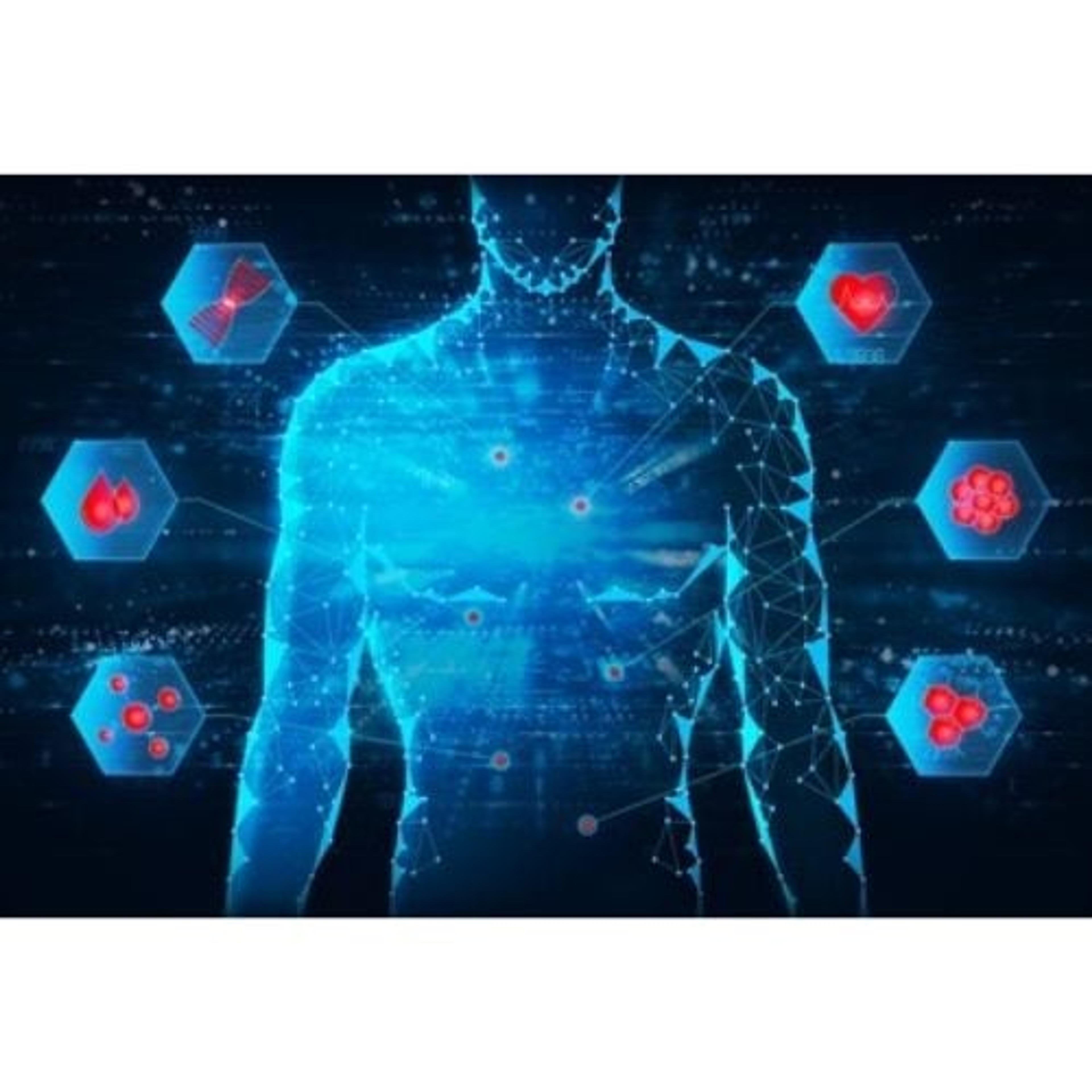Target Sufficiency: Leveraging targeted mass spectrometry for quantitative protein analysis in therapeutic discovery and development
Explore the utility and benefits of the Inotiv customizable MS-based proteomics platform for quantitative protein analysis of drug targets
10 Sept 2023

In this article, SelectScience® speaks with Daniel Liebler, Vice President of Proteomic Technology at Inotiv, to learn more about the company’s patented mass-spectrometry-based platform for quantitative protein analysis of drug targets and other key proteins in the target system, Target Sufficiency® . Liebler highlights the utility and benefits of the platform, how it can overcome the limitations of conventional immunoassays, and what researchers and drug developers stand to gain from partnering with a leading provider of critical research models and bioanalytical services.
In addition to his position at Inotiv, Liebler serves as an Adjunct Professor at the Vanderbilt University School of Medicine. Having worked for over three decades in academia, he left his full-time position at Vanderbilt in 2016 to found Protypia, a company specializing in mass spectrometry protein analyses for biotech and pharmaceutical R&D. In July 2022, Protypia was acquired by Inotiv, strengthening the company’s growing portfolio of mass spectrometry-based bioanalytical services.
A better way to quantify protein drug targets
Drug action almost always requires engagement with protein targets, but these proteins may vary substantially in expression between diseases or across cell populations. “Not only must the target be sufficiently abundant, but other co-regulatory partners of the target protein must also be present to constitute a functional system,” explains Liebler. “Without sufficient protein target and functional partners, a drug cannot elicit efficacy. Therefore, comprehensive analysis of drug target systems at the protein level is essential to the effective development of new therapeutics.”
Such analyses have been largely carried out using immunochemical methods, such as immunohistochemistry (IHC) and ELISA. However, these methods have widely recognized limitations, including the availability of antibody reagents, the qualitative or semi-quantitative nature of their measurements, and their limited capacity for multiplexed protein analyses. “The most frustrating technical barrier to protein measurement with immunochemical methods is the lack of high-quality antibody reagents,” says Liebler. “Moreover, antibody specificity is a constant concern, which leads to false positive detection and unreliable quantitation. Even with highly validated antibodies in immunoassays, the measurements are relative abundance estimates with limited dynamic range.”
In contrast, the Inotiv Target Sufficiency® platform is built on targeted mass spectrometry, the gold standard for protein quantitative analysis. “Mass spectrometry overcomes all these limitations and offers a robust, reliable, and sensitive means of analyzing any protein drug target,” says Liebler. “With high-resolution MS instruments, MS assays are completely selective for targeted sequences, and can provide linear dynamic range over 2–3 orders of magnitude with measurement variation commonly below 15%.”
Target Sufficiency® employs tandem mass spectrometry (MS/MS) to target specific peptide sequences unique to the protein of interest, using high-resolution MS instruments that measure peptide masses up to four decimal places. “We also use stable isotope-labeled peptide internal standards for every assay, thereby anchoring the measurement with an authentic standard,” adds Liebler. “This means the MS assays are not subject to ‘cross-reactivity’ and interferences that commonly affect immunoassays,” he adds, noting that the sensitivity of MS assays equals or exceeds that of the best immunoassays, with detection limits in the attomole range per microgram of sample protein.
Comprehensive protein quantification with wide versatility
Through enabling the direct quantitative analysis of drug target proteins and their co-regulators, Target Sufficiency® can be used to assess the presence and functioning of target systems in different diseases and subtypes and to determine which experimental or preclinical models express the target system in a manner most similar to the disease under investigation. “For example, in cancer, we can determine which tumor types express the target, or which mouse model expresses the target system in abundance comparable to the target tumor type,” says Liebler. The platform can also be used to measure protein level changes that result from drug action, thereby providing a precise measure of efficacy. “For example, MS can precisely quantify changes in levels of proteins targeted for degradation with ‘targeted protein degrader’ therapeutics, thereby providing a critical pharmacodynamic marker for evaluating these drugs in model systems and human clinical trials,” he adds.
Target Sufficiency® can be used to analyze the protein drug targets of diverse therapeutic approaches, from small molecules and biologics to RNA therapeutics, gene editing, and targeted protein degradation, and across a wide range of diseases, including oncology, metabolic, autoimmune, and neurodegenerative diseases. “Beyond screening for drug target system expression and comparing the suitability of model systems, applications of the platform include retrospective analyses of drug target systems in archival tissues from clinical trials, quantifying protein biomarkers of toxicity in archived tissue specimens from safety studies, validating gene edits at the protein level, and implementing protein biomarker measurements from the inception of a drug development program through to clinical trials,” Liebler enthuses.
Another key advantage of the platform is that it can be used for any sample type, including both clinical specimens and cell and animal models of disease, unstained or previously stained sections of fresh, frozen, and formalin-fixed paraffin-embedded (FFPE) tissues, and fresh or fixed needle biopsies. “We have successfully analyzed tissues that are physically challenging to dissociate, including muscle, brain, and bone,” says Liebler. “Our assays can also measure proteins in biofluids, including plasma, serum, urine, or cerebrospinal fluid. Typical sample inputs range from 1-4 sections or curls of 5 microns in thickness, 0.1–1 milligrams of wet weight tissue, or 5–10 microliters of plasma.”
A customizable, client-centric approach
The Inotiv Target Sufficiency® platform offers a highly customizable service, with the team working closely with researchers and drug developers to systematically develop MS assays for the measurement of any protein or any protein form. The team has already developed over 150 targeted protein assays – all without the requirement for antibodies or other affinity reagents. “We can design assays to target sequence variant forms of a protein, including mutations, splice variants, sequence-substituted proteins, or splice junction sequences resulting from gene editing,” shares Liebler. “Our assays can also measure post-translationally modified forms, such as phosphorylated sequences.”
The team can also quantify gene-edited proteins and editing nucleases resulting from the delivery of mRNA, thereby assessing the effectiveness and tissue specificity of gene delivery systems. “For example, we recently supported a leading gene editing company to develop a targeted MS assay for quantifying edited proteins in non-human primate plasma,” shares Liebler. “In this case, no immunoassay was available to quantify the protein, and the available colorimetric activity assay provided only estimates of protein activity, but not abundance. We developed a targeted MS assay to detect representative peptides from the protein, as well as the specific edited sequence,” he says. “Deployment of this multiplexed MS assay in NHP pharmacology studies enabled precise quantification of the edited protein and optimization of dosing. Moreover, the assay was sensitive enough to detect unanticipated changes in edited protein kinetics produced by different dosing schedules. Our MS assay thus enabled key preclinical milestones for this gene editing program and can provide a key clinical endpoint in future human studies.”
“Overall, we can develop assays for any form of any protein and for use with any sample type, while any combination of assays can be deployed for a project,” he says. “This represents an exciting opportunity for researchers and drug developers alike, and we look forward to continuing to support their efforts in developing the next generation of therapeutics,” he concludes.

